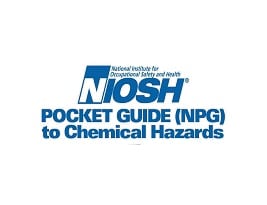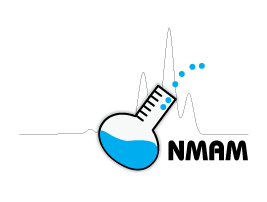Ethylene Oxide

Overview
CAS No. 75-21-8
Ethylene oxide (C₂H₄O) is a flammable gas with a slightly sweet odor. People exposed to it may:
- Have headaches
- Feel sick to the stomach
- Vomit
- Have diarrhea
- Have trouble breathing
- Feel sleepy
- Feel weak
- Be very tired
- Have eye and skin burns
- Get frostbite
- Have reproductive problems
Ethylene oxide may harm workers, and the harm it may cause varies depending on the situation. Possible harm can involve how much ethylene oxide a worker is exposed to, how long the worker is exposed, and what the worker is doing.
Many industries use ethylene oxide. Some use it to make ethylene glycol, which industries use to make antifreeze and polyester.
Here are examples of workers who may come into contact with ethylene oxide:
- Factory workers in plants that use it to make solvents, antifreeze, textiles, detergents, adhesives, or polyurethane foam
- Factory workers in plants that make ethylene oxide
- Farm workers who use it to control insects in grain bins
- Hospital workers who use it to kill germs on medical equipment and supplies
NIOSH recommends that employers use the Hierarchy of Controls to prevent injuries. If you work in an industry that uses ethylene oxide, please read chemical labels and review the Safety Data Sheets. Visit NIOSH’s page on Managing Chemical Safety in the Workplace to learn ways to control chemicals in workplaces.
Other terms for ethylene oxide include “dimethylene oxide,” “1,2-epoxy ethane,” and “oxirane.” Learn more in the resources below about keeping workers safe from ethylene oxide.
NIOSH Chemical Resources
Related NIOSH Resources
- Search for ethylene oxide—This is a database of NIOSH-authored or supported worker safety and health products, documents, grant reports, and journal articles.
- Worker health study summaries—NIOSH researches ways to prevent illnesses and injuries in the workplace.
- Immediately Dangerous to Life or Health Value Profile—NIOSH reviews scientific data to develop Immediately Dangerous to Life or Health values.
Selected Publications
- Preventing Worker Injuries and Deaths from Explosions in Industrial Ethylene Oxide Sterilization Facilities—DHHS (NIOSH) Publication No. 2007-164. This Alert focuses on the explosions, injuries, and deaths that can happen at ethylene oxide sterilization facilities and repackaging plants. It gives steps to prevent explosions.
- Control Technology for Ethylene Oxide Sterilization in Hospitals —DHHS (NIOSH) Publication No. 89-120 (1989). This historic report looks at systems that use ethylene oxide to kill germs in hospitals and ways to prevent workers from being exposed.
- Ethylene Oxide Sterilizers in Health Care Facilities—Engineering Controls and Work Practices—DHHS (NIOSH) Publication No. 89-115 (1989). This historic report looks at sources of ethylene oxide exposure and recommends how to protect hospital workers.
- Occupational Safety and Health Guideline for Ethylene Oxide— DHHS (NIOSH) Publication No. 81-123 (1988). This historic guideline has information for workplace safety and health programs.
- Ethylene Oxide: Evidence of Carcinogenicity—DHHS (NIOSH) Publication No. 81-130 (1981). This historic report focuses on information about the ability of ethylene oxide to cause cancer.
Related Resources
- ATSDR Frequently Asked Questions About Ethylene Oxide
- ATSDR Toxicology Profile for Ethylene Oxide
- Consumer Product Information Database: Ethylene Oxide
- EPA CompTox Chemical Dashboard
- EPA Ethylene Oxide
- EPA Hazardous Air Pollutants: Ethylene Oxide
- New Jersey Hazardous Substance Fact sheets: Ethylene Oxide
- NLM PubChem Ethylene Oxide
- NTP Report on Carcinogens Ethylene Oxide
- OSHA Safety and Health Topic: Ethylene Oxide
- OSHA Standard 1910.1047: Ethylene Oxide
- OSHA Fact Sheet: Ethylene Oxide
- OSHA Hazard Communication
International Resources
- Canadian Centre for Occupational Health and Safety: Ethylene oxide
- European Chemicals Agency Ethylene oxide
- Gestis substance database Ethylene oxide
- OECD Chemical Substance Search
- IARC Monographs: Ethylene Oxide
- ILO WHO International Chemical Safety Card: Ethylene Oxide
- WHO Concise International Chemical Assessment Document 54: Ethylene Oxide



